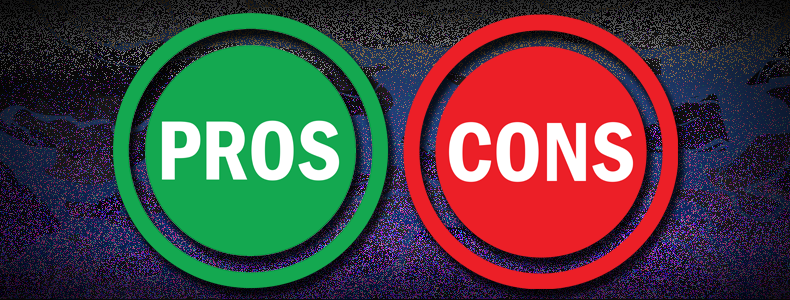There are two main forms of life insurance: whole life and term life. Many people question the difference between the two in hopes of understanding which policy is better for their circumstances. Rather than comparing, let’s take a more in-depth look at a whole life insurance policy by itself. Here are three advantages and disadvantages of whole life insurance policies.
Advantages
1. Benefit While Living
Most life insurance policies are known for paying out after a death occurs. Whole life has an added benefit of a cash value you can use while still living.1 With this cash value, you have the ability to do a few things. The majority of the time, you have the ability to take out a loan. Sometimes by borrowing against your cash value the life insurance company will be able to provide lower interest rates than a traditional bank.2 There is also the ability to make a withdrawal, meaning you can potentially take out part or all of your cash value, though it may be at a price.2 By withdrawing, you may be taking away funds from your death benefit, which can be disadvantageous at a later point in time. It is best to contact a licensed life insurance agent for more information on loans and withdrawals as well as any other options available to you.
2. Covered For Life
Assuming you have been keeping up with your payments, whole life insurance will last your entire life.3 You get to keep the same policy from the time you purchase it until the time you pass, never having to worry about end dates. People may enjoy this feature because they know their loved ones will always have a death benefit paid to them so they won’t be financially strained during a hard time in their life.
3. Predictable Premiums
Whole life insurance premiums generally stay consistent for the whole policy because there is no ending date where the insurance company would reevaluate your age and health.
Explore Coverage
Learn more about our product offerings by speaking with an agent
Disadvantages
1. Higher Premiums
Because a whole life policy covers you for your entire life span, given you pay premiums on time, they typically have higher premiums associated with them.1 Whole life premiums can cost about five to 10 times more than term life policy premiums.4 This extra cost is validated by some because whole life policies have added benefits such as the cash value mentioned above.
2. Cash Value May Not Accrue Quickly
As we’ve talked about, whole life policies can have a cash value. However, while there is a value, it doesn’t necessarily grow quickly.1 It could take up to 10 to 15 years to gain a value worth enough to be able to borrow against.3
3. Complex Structure
Life insurance can be difficult to understand in the first place, but whole life insurance has a rather complex set up making things particularly harder to comprehend.5 It can be a struggle for some to purchase something they don’t fully grasp, seeing as though they want to make sure they’re getting a good deal and their money is going to the right place.
Whole life insurance can be advantageous in its cash value benefitting you while you’re alive, its whole life coverage, as well as its predictable premiums. However, it does have its drawbacks and disadvantages, such as its potential higher premiums, its slow accruing cash value, and its complex structure. Contact licensed life insurance agents to see if whole life insurance is the best policy for you.
- Bankonyourself.com, What are the Advantages and Disadvantages of Whole LifeInsurance?, 2020,
- Investopedia, 6 Ways to Capture the Cash Value in Life Insurance, 2020
- Thesimpledollar.com, Who Needs Whole Life Insurance Coverage?, 2019
- Doughroller.net, Pros and Cons of Whole Life Insurance 2019
- Moneyunder30.com, Is Whole Life Insurance a Good Investment? A Look At The Pros and Cons, 2019
Categories: Insurance, Group Life

